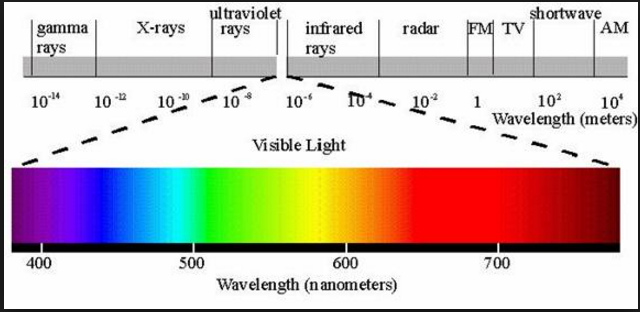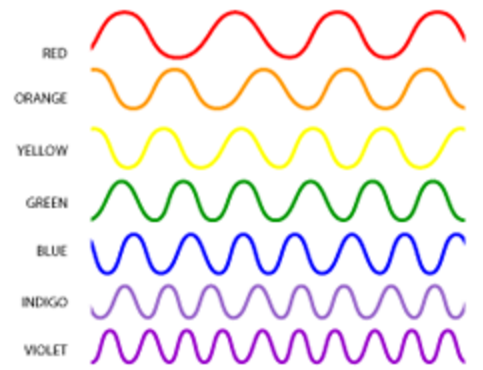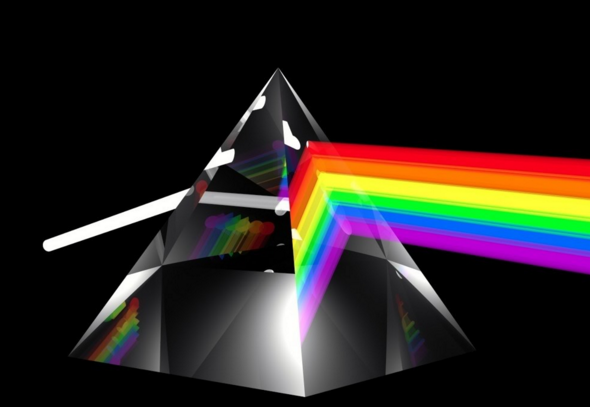Light Scattering: Why is the Sky Blue
by Irene Hammel
Visible Light Spectrum
Electromagnetic Radiation is light, but only a small part is visible to the human eye. This portion is known as the visible light spectrum, the rest os the spectrum is either too large or too small for our eyes to receive. Visible light falls between infrared (IR) and ultraviolet (UV). It has wavelengths of about 740 nanometers (nm) to 380 nm. The image belows shows how small the portion of visible light is in comparison to all the wavelengths that exist. The most important characcteristic of visible light is color. Our eyes percieve each wavelength as a different color. The following section will go more in detail of how wavelengths relate to colors and how humans perceive them.

Wavelengths
The wavelengths of reflected light determine what color you see. Light at the lower end of the visible spectrum is perceived as red. Green light is found in the middle of the spectrum. While light at the upper end of the spectrum is seen as violet. All other colors that we perceive are mixtures of these colors. White light contains all colors and black is the absence of light. Our eyes are able to percieve these colors because of cones our eyes contains. Cones are photoreceptors, in other words tiny cells in the retina that respond to light. There are around 6 to 7 million cones in the light-sensitive retina at the back of your eye. In the image below you can see which wavelength represents each colors and also the relation of color and amplitude.

Prism
Lightscatering
Rayleigh Scattering
Why is the Sky Blue?
Why is the Sunset Red?
History
Isaac Newton: prism
John William Strutt (Lord Rayleigh)
See also
Further reading
Read more about:
- Lord Rayleigh (John Strutt): http://micro.magnet.fsu.edu/optics/timeline/people/rayleigh.html
- Electromagnetic and Visible Spectra: http://www.physicsclassroom.com/class/light/Lesson-2/The-Electromagnetic-and-Visible-Spectra
- Dispersion of Light by Prisms: http://www.physicsclassroom.com/class/refrn/Lesson-4/Dispersion-of-Light-by-Prisms
External links
http://science.hq.nasa.gov/kids/imagers/ems/visible.html
http://www.sciencekids.co.nz/sciencefacts/light.html
References
http://www.sciencemadesimple.com/space_black_sunset_red.html
http://missionscience.nasa.gov/ems/09_visiblelight.html
http://www.livescience.com/50678-visible-light.html
http://www.livescience.com/32559-why-do-we-see-in-color.html



